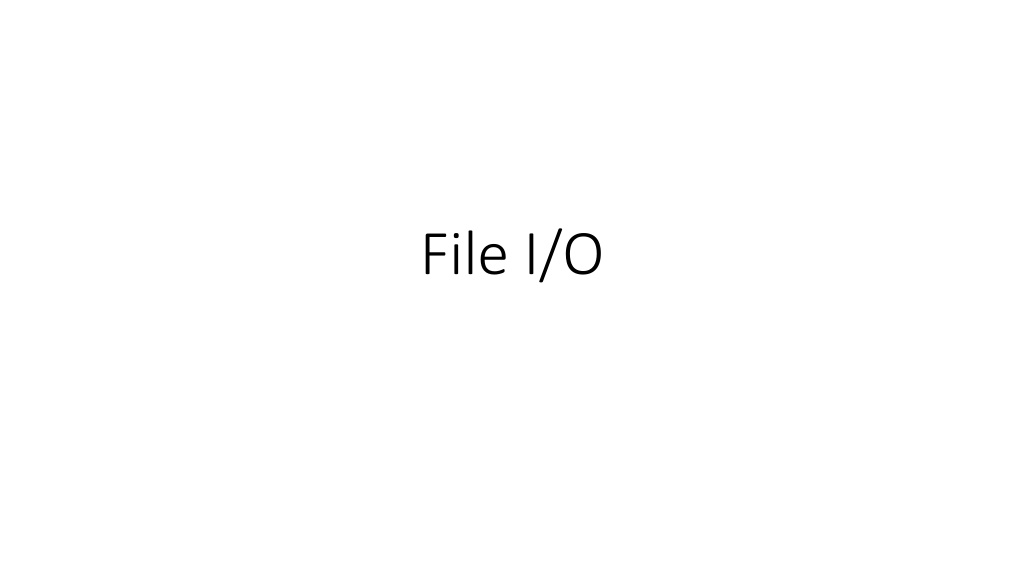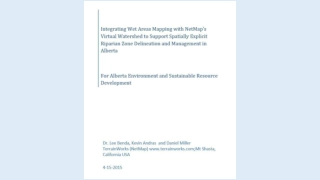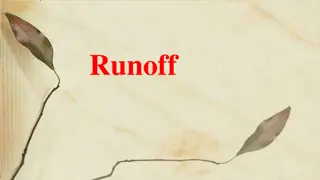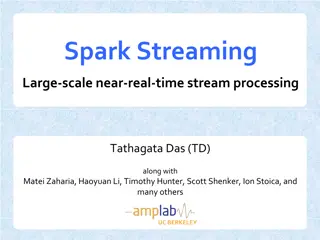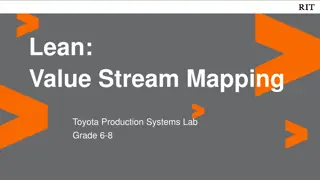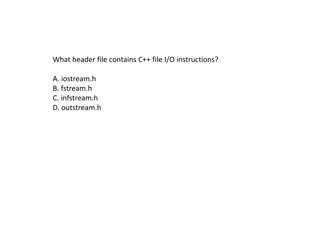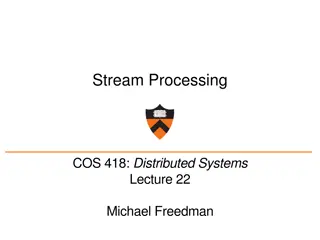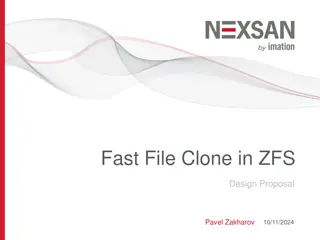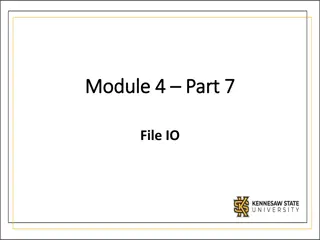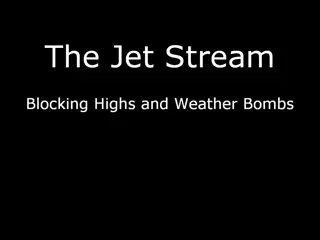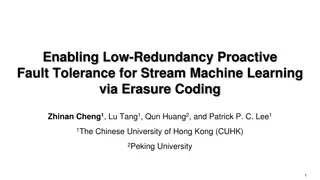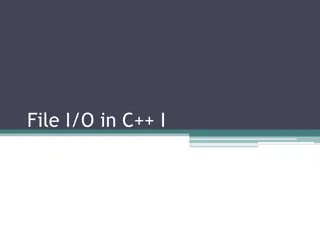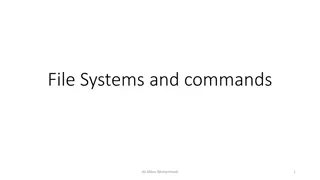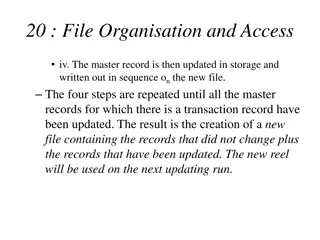File I/O and Stream Connections Basics
"Learn how to work with file input and output streams in C++. Understand the essentials of connecting file streams, reading data from files efficiently, and utilizing end-of-file markers. Explore examples and best practices for utilizing ifstream and ofstream effectively in your C++ programs."
Download Presentation

Please find below an Image/Link to download the presentation.
The content on the website is provided AS IS for your information and personal use only. It may not be sold, licensed, or shared on other websites without obtaining consent from the author.If you encounter any issues during the download, it is possible that the publisher has removed the file from their server.
You are allowed to download the files provided on this website for personal or commercial use, subject to the condition that they are used lawfully. All files are the property of their respective owners.
The content on the website is provided AS IS for your information and personal use only. It may not be sold, licensed, or shared on other websites without obtaining consent from the author.
E N D
Presentation Transcript
Objectives Learn input and output streams to work with files
Stream Connections Can you use cin or cout to work with files? Input stream (type: iStream): cin Output stream (type: oStream): cout We must use some file streams to work with files Data file extension: .dat
Stream Connections File Stream Basics: #include <fstream> // short for file stream Input File Stream type: ifstream Output File Stream type: ofstream
General Usage Flow 1 Declare and connect a file stream object 2 Use it 3 Close it
Reading in Data from a File When would you know to stop reading from a file? Utilize an end-of-file marker Utilize the state of the file stream objects (both ifstream & ofstream) http://www.cplusplus.com/reference/fstream/ifstream/ End-of-file marker
Reading in Data from a File 1) Utilize an end-of-file marker Input:
Reading in Data from a File 1) Utilize an end-of-file marker Input: Other string manipulations for data input can be used too, e.g. getline()
Reading in Data from a File 1) Utilize an end-of-file marker Output:
Reading in Data from a File 2) Utilize the state of a file stream object Input:
Reading in Data from a File 2) Utilize the state of a file stream object Input: The return value of (fin >> data) is fin (recall the overload of <<) When there is no more data to read from the file (or if some errors occurred), the state of fin will be evaluated as false
Review of operator << overload Reference: LHS RHS return the LHS
Reading in Data from a File 2) Utilize the state of a file stream object Input: The return value of (fin >> data) is fin (recall the overload of <<) When there is no more data to read from the file (or if some errors occurred), the state of fin will be evaluated as false After reading in 10, there will be no more data to read in, so the state of fin becomes false
Reading in Data from a File 2) Utilize the state of a file stream object Output:
Using File Stream Objects as Function Parameter When used as a function argument, a file stream object (actually any stream object) must be pass-by-reference.
Using File Stream Objects as Function Parameter Making the function call after fin is successfully connected
Writing Data to a File output.dat will be created if it does not exist If output.dat exists, then new data will overwrite the old data
Writing Data to a File How would the output file looks like?
Writing (append) Data to a File Append the data written out to the end of an existing file http://www.cplusplus.com/reference/fstream/ofstream/ofstream/
Writing (append) Data to a File Append the data written out to the end of an existing file http://www.cplusplus.com/reference/fstream/ofstream/ofstream/ How would the output file looks like?
One More Note on the Operator << Overload This insertion operator overload will work for cout It will also works for the output file stream, so you can use it to write to a file
